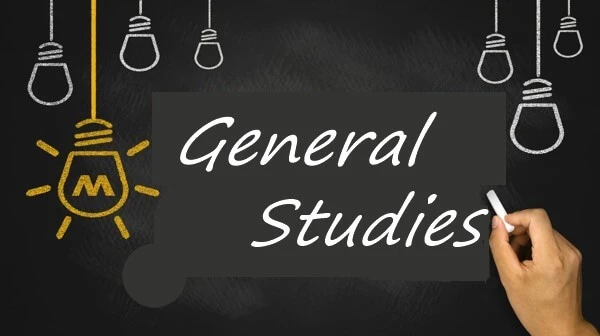Ionic Bonding Books
Chemistry For Dummies ,2nd edition
Author: John Moore
School: Covenant University
Department: Science and Technology
Course Code: CHM221
Topics: Chemistry, Scientific Method, SI Measurement System, chemical calculations, matter, energy, atom, atomic structure, periodic table, chemical reactions, mole concept, solutions, thermochemistry, Enthalpy, heat of reaction, acid, base, quantum theory, ionic bonding, Covalent Bonding, Intermolecular Forces, Condensed States, environmental chemistry, air pollution, water pollution, nuclear chemistry
Chemistry The Molecular Nature of Matter and Change ,9th edition
Author: Martin Silberberg, Patricia Amateis
School: University of Nigeria, Nsukka
Department: Science and Technology
Course Code: CHM112
Topics: Chemistry, matter, Stoichiometry, Chemical Reactions, Kinetic-Molecular Theory, Thermochemistry, Quantum Theory, Atomic Structure, Electron Configuration, Chemical Periodicity, chemical bonding, Shapes of Molecules, covalent bonding, Intermolecular Forces, Periodic Patterns, Organic Compounds, carbon, chemical reactions, chemical kinetics, chemical equilibrium, Acid-Base Equilibria, Ionic Equilibria, Thermodynamics, Entropy, Free Energy, Reaction Direction, Electrochemistry, Chemical Change, Electrical Work, Transition Elements, nuclear reactions
Principles of General Chemistry ,3rd edition
Author: Martin Silberberg
School: University of Nigeria, Nsukka
Department: Science and Technology
Course Code: CHM101, CHM112, CHM122
Topics: matter, chemical reactions, gases, Kinetic Molecular Theory, Thermochemistry, Energy Flow, Chemical Change, Quantum Theory, Atomic Structure, Electron Configuration, Chemical Periodicity, Chemical Bonding, Shapes of Molecules.Covalent Bonding, Intermolecular Forces, Periodic Patterns, solutions, Organic Compounds, carbon, Mechanisms of Chemical Reactions, Acid-Base Equilibria, Ionic Equilibria, Thermodynamics, Entropy, Free Energy, Electrochemistry, Chemical Change, Electrical Work, Transition Element, Nuclear Reactions
Student Solutions Manual to accompany Principles of General Chemistry
Author: Martin Silberberg, Patricia Amateis
School: University of Nigeria, Nsukka
Department: Science and Technology
Course Code: CHM101, CHM112, CHM122
Topics: matter, chemical reactions, gases, Kinetic Molecular Theory, Thermochemistry, Energy Flow, Chemical Change, Quantum Theory, Atomic Structure, Electron Configuration, Chemical Periodicity, Chemical Bonding, Shapes of Molecules.Covalent Bonding, Intermolecular Forces, Periodic Patterns, solutions, Organic Compounds, carbon, Mechanisms of Chemical Reactions, Acid-Base Equilibria, Ionic Equilibria, Thermodynamics, Entropy, Free Energy, Electrochemistry, Chemical Change, Electrical Work, Transition Element, Nuclear Reactions
Introduction to material science tutorials and assignment work book
Author: ENG207
School: Federal University of Technology, Owerri
Department: Engineering
Course Code: ENG207
Topics: Metallic Materials, metal, alloy, Ceramic Materials, Polymeric Materials, polymers, Composite Materials, chemical bonds, bonding, covalent bond, ionic bond, metallic bond, crystal structure, crystallography, atomic packing, Bravais lattices, crystal, unit cell, lattice point, crystallographic planes, density, Geometrical arrangement, solubility
Principles of Physical Chemistry
Author: Madan Pathania, BR Puri, LR Sharma
School: Federal University of Agriculture, Abeokuta
Department: Science and Technology
Course Code: CHM101
Topics: Physical Chemistry, atomic spectra, chemical bonding, molecular quantum mechanics, molecular spectroscopy, gaseous state, liquid state, liquid crystals, mesomorphic state, first law of thermodynamics, second law of thermodynamics, third law of thermodynamics, thermochemistry, chemical equilibria, phase equilibria, Nernst distribution law, Ionic equilibria, elctrolytic conductance, electrolytic transferance, classical statistical mechanics, chemical kinetics, photochemistry, catalysts, solid state, collodial state, surface chemistry, mass spectrometry, macromolecules, irreversible thermodynamics
Periodic properties of the atoms of an element
Author: CHM112 FUTMINNA
School: Federal University of Technology, Minna
Department: Science and Technology
Course Code: CHM112
Topics: electronic configuration, atomic orbitals, orbital diagram, Aufbau principle, Hund's rule, shielding effect, effective nuclear charge, diamagnetism, paramagnetism, Bohr's theory, Bohr model, correspondence principle, De broglie wavelength, De broglie equations, uncertainty principle, hydrogen atom, Schrodinger equation, classical praticles, quantum particles, Quantum numbers, Azimuthal Quantum Number, principal Quantum Number, Spin Projection Quantum Number, Pauli Exclusion Principle, Exclusion Principle, Physical Phenomena, covalent bonds, covalent compounds, Ionic Compounds, Hybridization, Pi bond formation, Pi bond, ethylene bonding
Essentials of physical chemistry
Author: Arun Bhal, BS Bahl, GD Tuli
School: University of Ilorin
Department: Science and Technology
Course Code: CHM212
Topics: atom, isotope, isobar, atom-classical mechanics, atom-wave mechanical approach, nuclear chemistry, chemical bonding, thermodynamics, gaseous state, liquid state, solid state, chemical constitution, solutions, dilute solutions, osmosis, osmotic pressure, chemical equilibrium, distribution law, phase rule, chemical kinetics, catalysis, colloids, adsorption, electrolysis, electrical conductance, electrolytic dissociation, ionic equilibria-solubility product, acid, base, salt hydrolysis, electromotive force, photo chemistry, SI Units, mathematical concepts
Concise Inorganic Chemistry, 5th edition
Author: JD Lee
School: University of Ilorin
Department: Science and Technology
Course Code: CHE127, CHE227
Topics: atomic structure, bonding, periodic table, ionic bond, covalent bond, metallic bond, coordination bond, hydrogen, hydride, alkali metal, alkaline earth metal, chalcogen, group 2 element, group 13 element, S-block element, P-block element, group 14 element, group 15 element, group 16 element, halogen, group 17 element, halogen oxide, noble gas, transition element, scandium group, titanium group, vanadium group, chromium group, manganese group, iron group, cobalt group, nickel group, copper group, zinc group, Bohr theory, Pauli exclusion principle, atomic spectra, Hund rule, solubility, conductivity, lattice energy, stochiometric defect, schottky defect, Lewis theory, octet rule, sidgwick-powell theory, VSEPR theory, isoelectronic principle, Heisenberg uncertainty principle, radial function, angular function
Author: John Olusina Obimakinde, Samuel Oluwaseun Obimakinde
School: WAEC, JAMB & POST UTME
Department:
Course Code: CHEMISTRY
Topics: Chemistry Calculations, Masses and Formulae, Relative Atomic and Molecular Masses, Mass Percentage Composition, Valency, Chemical Formula, Empirical and Molecular Formulae, Reduced Mass, Chemical Reaction, Stoichiometry, Mole, Chemical Equations, Reaction Stoichiometry, Chemical Laws, Redox Reactions, IUPAC Nomenclature, Oxidation Number, Redox Equations, IUPAC Nomenclature of Inorganic Substances, Atomic Structure, Chemical Bonding, Dalton’s Atomic Theory, Wave-Particle Duality of Matter, Uncertainty Principle, Ionization Energy, Ionic Bond, Lattice Energy, Covalent Bond, Heat of Reaction, Dipole Moment, Formal Charge, The Gaseous State, Gas Pressure, Gas Laws, Critical Constants of Gases and Equations of State for Real Gases, Reduced State Properties, Gas Density, Gas Stoichiometry, Molar Volume of Gases, Relative Vapour Density, Gas diffusion, Mole Fraction, Kinetic Theory of Gases, The Solid and Liquid States, Vapour Pressure, Change of State, Density of Solids, X-Ray Crystallography, Determination of Viscosity of Liquids from Stokes’ Law, Surface Tension, Properties of Solutions, Concentration, Molality, Solubility, Solubility Product, Colligative Properties of Solutions, Conductance of Solutions, Quantitative Analysis, Volumetric Analysis, Gravimetric Analysis, Thermodynamics, Calorimetry, Heat (Enthalpy Change) of Physical Change, Heat (Enthalpy Change) of Reaction, Heat Capacities of Gases, Thermodynamics of Solutions, The First Law of Thermodynamics, The Second Law of Thermodynamics, Efficiency, Electrochemistry, Electrochemical Cells, Electrolysis, Chemical Equilibria, Le Chatelier’s Principle, Position of Equilibrium, Equilibrium Constant, Reaction Quotient, Acid-Base Equilibria, Acid Ionization Constants, Base Ionization Constants, Water Autoionization Constant, Hydrogen Ion Concentration, Buffer Solutions, Salts, Chemical Kinetics, Rates of Reactions, Rate Law, Nuclear Chemistry, Radioactivity, Nuclear Reactions
Departments

Administration, Social and Management science

Agriculture and Veterinary Medicine

Arts and Humanities

Education

Engineering

General studies

Law

Medical, Pharmaceutical and Health science

Science and Technology